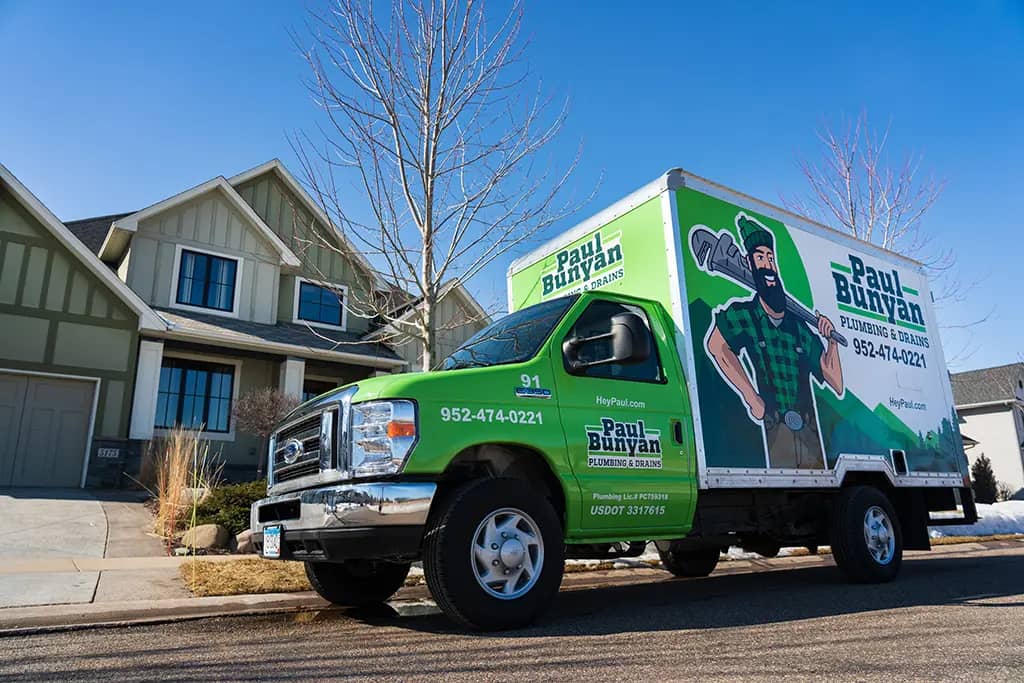Most homeowners don’t realize that the plumbing in their home can become vulnerable and frozen when outdoor temperatures drop below 20 degrees Fahrenheit. Once the pipes have frozen over, it becomes vulnerable to bursting or cracking due to the fact that ice expands. The tremendous pressure of the expansion can cause a tremendous amount of damage to your plumbing. The frozen water will also disrupt your overall plumbing, and you might not be able to get any water when you turn on the faucet.
This isn’t an issue that you should try to resolve on your own. Instead, you’re going to need to call a plumber in St. Paul, MN to help you out. Getting your pipes unfrozen professionally will prevent further damage. Some homeowners may want to narrow down the section of the plumbing before the plumbers from St. Paul, MN arrive at their home. This way, the plumbers can spend less time investigating where the issue is located and spend more time focusing on how to thaw out the frozen sections. Here are 3 ways that you can try to narrow down which sections may be frozen. Even if you’re wrong, this information can really help your plumber out.
#1. Figure Out Which Faucets Aren’t Working
In general, if some of the pipes are frozen, some sections of your home’s plumbing system will not work. Depending on which areas are frozen, different faucets should no longer have running water. One of the easiest ways that you can narrow down which pipes are frozen is to figure out which faucets aren’t running or working. Make note of which faucets aren’t working or are barely working and provide this information to your plumbers. They’ll know what to do with it.
For example, if only the faucet in one of your washrooms isn’t working, there’s a good chance that the section of the plumbing between the main line and that split is frozen. On the other hand, if you notice that almost all, if not all, of your plumbing isn’t working, then there’s a good chance that the main water pipeline is frozen. The reason that it’s important to also make note of which faucets are still running, but with decreased capacity, is because this may be an indication that the plumbing may be on its way to becoming completely frozen. Being proactive and stopping this from happening can also save you a lot of money and headaches in the future.
#2. Listen for the Sound of Running Water
Another interesting observation that you can make is whether you can hear the sound of running water in your plumbing. Once you’ve turned on a faucet or two, put your head on the walls to see whether you can hear running water. This may not always be the best idea or the best way to diagnose whether there is a frozen pipe, but it can help. It’s an interesting observation that you can make and give to a plumber, especially if you’ve noticed a huge difference.
For example, if you have always heard running water in a part of your home when you turned on the faucet but can’t hear it anymore, this might be helpful to your plumber. In general, the idea is that if the plumbing is not frozen, you should still be able to hear the water running through the pipes. However, if that area of the pipe is frozen, or if an area upstream is frozen, you won’t be able to hear the water running at all.
Here’s a tip. If you’re not sure where the pipes are located in your home, you might want to pull up the blueprint of your house first. This will give you an approximate idea of where the plumbing is installed in each room or section of the house, so you know where to pay particular attention to. If you don’t know where the plumbing is, you can always ask your plumber when they arrive.
#3. Look for Visible Damages in Exposed Plumbing
This next tip may also be a bit difficult to do; however, if you have the blueprint of your house on hand, you might be able to track down exposed pipes to see what condition they’re in. This is usually easiest for pipes that are exposed and outside of the home. You might also be able to take a look at other plumbing areas to see whether you see any frost on the pipes or any other indication that you might need to worry about it being frozen.
If you can’t see the pipes, that’s okay too. You might want to consider the condition of the environment surrounding the plumbing. For example, you might want to take a look at the insulation that surrounds the pipes to see whether they are worn down or deteriorated. If an area of the plumbing no longer has any insulation protecting it, it will be more vulnerable to temporal fluctuations and conditions.
If you have access to your basement or the crawlspace of your home, you can consider taking a look there. If the plumbing there is exposed or frozen, it will likely affect the main water pipeline.
Can’t Figure It Out? Don’t Worry! Our Plumbers Can Get the Job Done!
If you can’t figure it out, don’t worry. You can still give us a call at 952-213-3642 or contact us online. We recognize that most homeowners aren’t specialists and aren’t going to know exactly where the problem is. That’s why all technicians at Paul Bunyan Plumbing & Drains will have the necessary equipment and training needed to help you diagnose and solve every plumbing problem. Our technicians are skilled at solving many plumbing issues, and can offer you some advice on how to prevent your pipes from getting frozen again.
In the meantime, we’ll help you unfreeze your plumbing, so that water flows through it properly again. We can also take this time to help you determine whether there are any issues that need to be resolved. If you need any plumbing issues resolved in St. Paul, MN, give us a call today!


